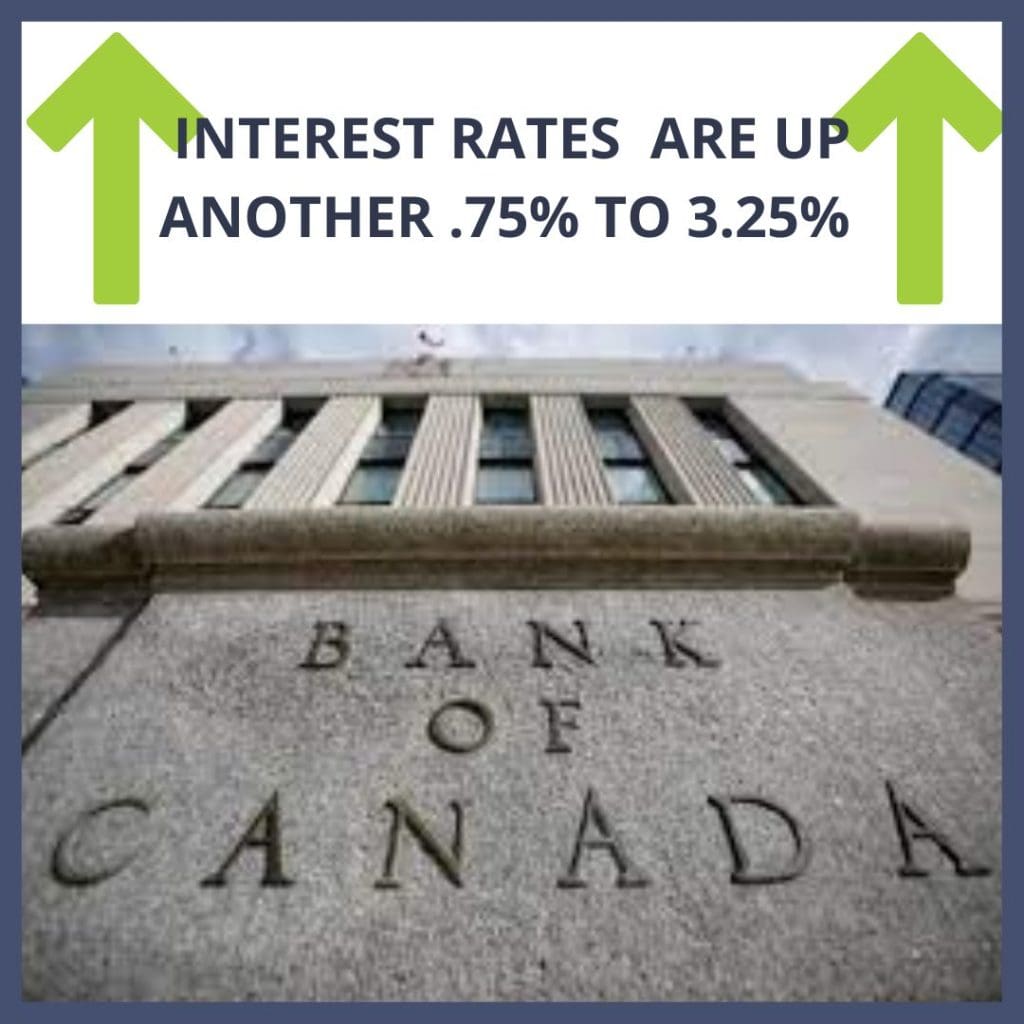The Bank of Canada has once again raised its interest rates. They have announced an increase of 0.75% bringing the current lending rate up to an astonishing 3.25%… the highest we have seen in quite some time. What does this mean for you? Well, if you have a fixed-rate mortgage, count your lucky stars because your interest rate is certainly much lower than anything out there right now. Unfortunately, most people currently have variable-rate mortgages because the interest rates were far too good to pass up. What started out as a good thing can now become very detrimental if you do not have a plan in place to handle these rate increases.
First, let’s start with some basics on variable-rate mortgages. You can have a fluctuating payment or a static payment. A fluctuating payment automatically changes your mortgage payment based on the current variable rate. While this increases your payment, it ensures your mortgage amortization will not change, so a 25-year mortgage is paid off in 25 years.
Conversely, a static payment mortgage keeps your monthly payment the same, regardless of what the underlying variable rate is. For instance, if you got your mortgage when rates were at .5% and your payment was $2,000 per month, that’s the amount it will stay at. I can gaurantee that if you had been provided this option by your lender, you took it.
While having a fixed payment is a comforting feeling, the reality is that your mortgage payment consistents of two components: your principle and your interest. With the continued increase in interest rates, the amount you are paying towards principle has decreased susbtantially. For instance, if you are paying $2000 a month on your mortgage, only $200 might be going towards the principle with the rest covering interest. While it was relatively managable with the first several Bank of Canada interest rate hikes, most consumers are likely entering their “Trigger Rates”.
Your trigger rate is essentially when you are no longer paying any principal on your mortgage and your lender increases your fixed payment. This could be quite difficult for some people to manage but I can assure you, it is in your best interests to focus on paying down the principal on your mortgage. This is something that is not covered very much in the media and a mortgage you thought would be paid off in 25 years is actually looking more like 45 years at the current rates.
You can calculate your own trigger rate with the following formula: (Payment amount X number of payments per year / balance owing) X 100) to get your trigger rate in percentage.
If you have reached your mortgage trigger rate, don’t panic., you have a few options:
- Adjust Your Payment: Firstly, you may choose to adjust your payment amount to ensure that you still have some going towards your principal balance.
- Review Your Amortization Schedule: Consider switching your amortization schedule from 20-year to 25-year which would be ideal if you already have equity in your home. However, if you’re already at your maximum amortization for your lender (i.e. 30-year mortgage), you would need to increase your payment.
- Switch to a Fixed-Rate Mortgage: Many borrowers are now choosing to opt for a fixed-rate mortgage to avoid the issue of increased interest and trigger rates. Keep in mind, depending on your mortgage product, you may face penalties if you switch your mortgage mid-term. Be sure to discuss any mortgage changes with me before going ahead.
- Consider Shifting Some of Your Investment Portfolio Into Your Mortgage: At the current interest rates, and based on the fact you pay your mortgage with after tax dollars, you would be getting quite a decent return by paying down your mortgage and saving on that interest payment. You can look to see how well (or not) your portfolio is doing. If you are getting less than a 6% return, I would consider shifting some funds.
- Pay Off Your Mortgage: The final option that is always there is for you to pay off your mortgage entirely. Though don’t fret if this is not possible!
In the overall picture, it is likely we will see the Bank of Canada drop their interest rates once inflation has leveled out. Of course, we do not know when that will be so it is very important that you review your current mortgage and financial situation to ensure you are protected in the event rates stay at this level for an extended amount of time.
While we recommend you have a conversation with a mortgage professional or a financial planner, you can always contact us to have a free consultation and we would be happy to point you in the best direction possible.

